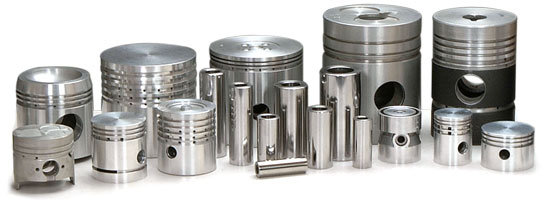What Are Piston PCD Inserts?
Polycrystalline Diamond (PCD) inserts are cutting tools that utilize synthetic diamond particles sintered together with a metallic binder. Piston PCD inserts are specifically designed for the machining of pistons, which are critical components in internal combustion engines. These inserts offer superior hardness, wear resistance, and thermal conductivity compared to traditional carbide inserts.

1. Enhanced Durability: Piston PCD inserts exhibit exceptional wear resistance, significantly extending tool life. This durability is crucial for high-volume manufacturing environments where tool replacement downtime can be costly.
2. Superior Surface Finish: The hardness of PCD materials ensures a finer, more consistent surface finish. This is vital for pistons, where surface quality can impact engine performance and longevity.
3. Increased Efficiency: Piston PCD tools allow for higher cutting speeds and feeds, reducing cycle times and boosting productivity. This efficiency translates to lower operational costs and higher throughput.
4. Thermal Stability: PCD inserts maintain their cutting edge at high temperatures, making them ideal for machining materials that generate substantial heat during the process.
Piston PCD tools are not limited to piston machining; their applications extend to various high-precision components across different industries:
Automotive Industry: Besides pistons, PCD inserts are used for machining other engine components like cylinder heads and valve seats, where precision and wear resistance are crucial.
Aerospace Industry: PCD tools are employed in the machining of composite materials and aluminum components, ensuring high precision and longevity.
Medical Device Manufacturing: PCD inserts are ideal for producing intricate and precise components required in medical devices.

Choosing the appropriate Piston PCD inserts involves considering several factors:
Material Compatibility: Ensure the PCD insert is suitable for the material being machined. While PCD is excellent for non-ferrous metals and composites, it is not ideal for ferrous materials due to chemical reactivity.
Insert Geometry: The design of the insert should match the specific requirements of the machining operation, including factors like depth of cut and desired surface finish.
Machine Compatibility: The machine tool should be capable of handling the high speeds and feeds associated with PCD machining.
As technology advances, the development of Piston PCD tools continues to evolve. Innovations in synthetic diamond production and bonding technologies promise even greater performance enhancements. Additionally, the integration of PCD inserts with advanced CNC machining centers and smart manufacturing systems will further optimize their use, leading to more precise and efficient machining processes.
For all inquiries, please fill in the form below (* are required) to send us a brief message, and we will get back to you as soon as possible.